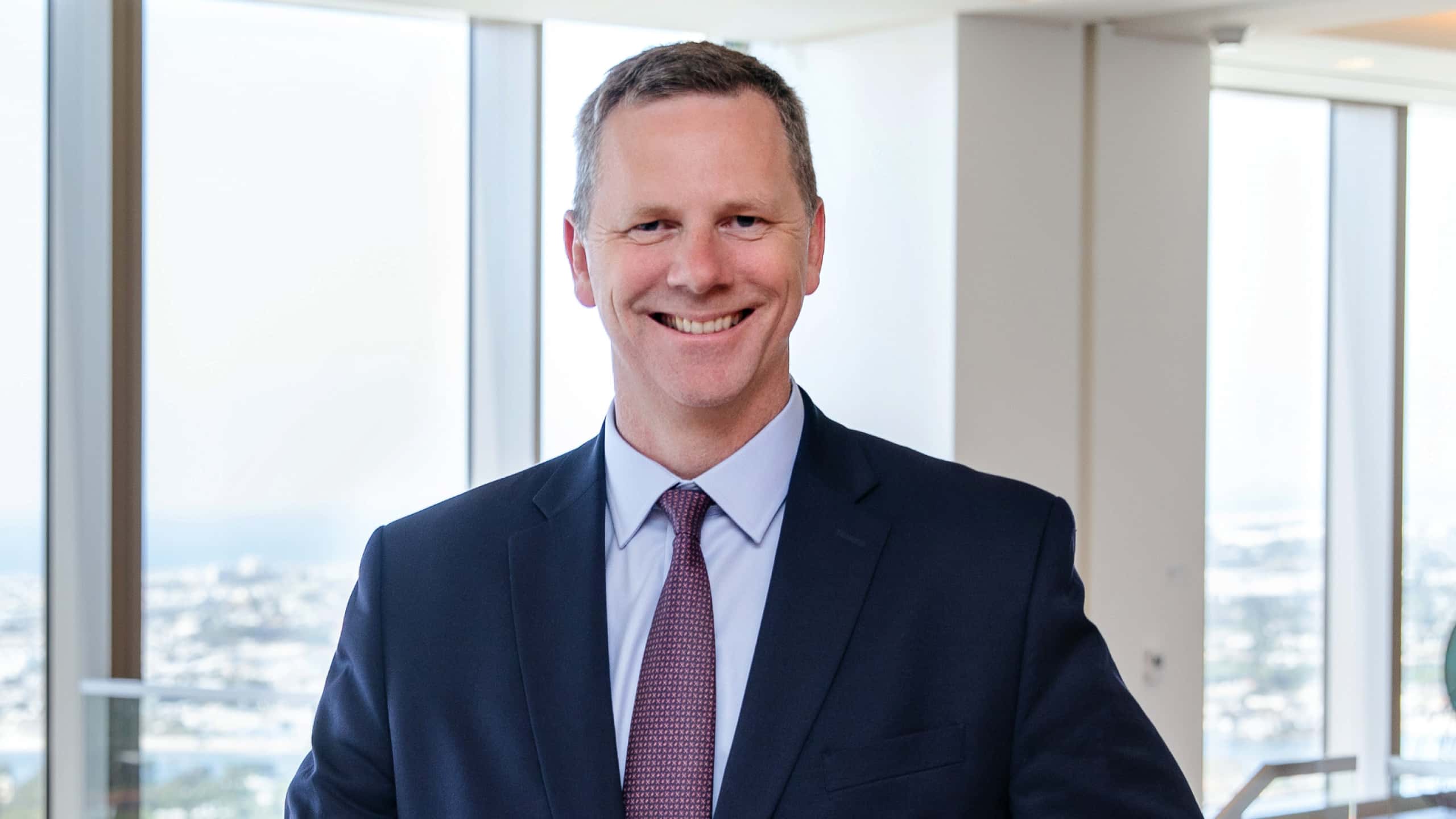


주요 시사점
- 자산 기반 금융은 PIMCO가 가장 확신을 갖고 있는 투자 테마 중 하나로, 시장 규모는 20조 달러를 넘습니다. 자산 기반 금융은 광범위한 영역을 포함하지만, 주요 부문으로는 주택 담보 대출, 미국 소비자 대출, 항공 금융, 데이터 인프라가 있습니다.
- 은행들은 더 제한적인 환경에서 운영을 지속할 것으로 예상되며, 이에 따라 추가적인 자본 파트너를 모색하고 비대차대조표 대출 대안을 우선시할 것입니다.
- 높은 진입 장벽과 전문적인 역량에 대한 요구는 이러한 변화하는 시장에서 역량을 갖춘 투자자들에게 경쟁 우위를 제공합니다.
자산 기반 대출은 은행들이 변화하는 자본 요건에 대응하고 대차대조표를 최적화하려는 과정에서 전통적인 직접 대출의 매력적인 대안으로 자리잡고 있습니다. 유형 자산으로 담보된 투자 덕분에, 이 부문은 주요 분야의 근본적인 추세로 더욱 탄탄해지고 있습니다.
첫 번째 요인은 견고한 가계 재무 상태와 높은 주택 보유자 자산 가치를 바탕으로 한 미국 소비자의 강력한 지출 여력입니다. 또 다른 요인은 클라우드 컴퓨팅과 고급 데이터 처리에 대한 수요 증가로 촉진된 데이터 센터에 대한 투자입니다.
글로벌 금융 위기(GFC) 이후, 은행들은 더 엄격한 규제, 대출 회계 방식의 변화, 그리고 이제 막 반전되기 시작한 급격한 금리 상승 등 연속적인 도전에 직면해 왔습니다. 이러한 요인들은 자본 요건에 영향을 미치고 대출 비용을 증가시켜, 많은 은행들이 대차대조표를 축소하고 특정 유형의 대출을 우선시하며, 위험 관리에 집중하도록 만들었습니다.
바젤 III 규제 프레임워크는 글로벌 금융 위기(GFC)에 대응하여 은행의 감독과 위험 관리를 강화하기 위해 개발되었습니다. 2023년 3월 지역 은행 위기 이후, 새로운 미국 행정부가 규제를 전반적으로 완화할 가능성이 있더라도, 은행들, 특히 대형 지역 대출기관들이 여전히 긴축적인 환경에 직면할 것으로 예상됩니다. 규제 당국은 미국에서는 "바젤 III 엔드게임," 전 세계적으로는 "바젤 IV"로 알려진 개정된 프레임워크를 검토 중이며, 이는 자본 요건을 증가시킬 가능성이 있습니다.
새로운 규제에 대한 명확성이 확보되기를 기다리며, 은행들(특히 은행 주주들)은 장기적이고 안정적인 수익성에 주력하고 있습니다. 이를 달성하기 위해, 은행들은 높은 자본 요건이 요구되는 대출과 수익 변동성을 증가시키는 대출의 비중을 줄이고 있습니다. 이로 인해 은행들이 전략적 자본을 제공하거나 비대차대조표 대출 대안을 제시할 수 있는 추가적인 파트너를 모색하게 된 것으로 보입니다.
이러한 변화는 다양한 자산 기반 시장에서 사모 자본에 새로운 기회를 열어주고 있으며, 특히 사모 기업 시장과 비교할 때 매력적인 초기 밸류에이션과 우호적인 펀더멘털을 제공합니다. 현재 투자자들은 낮은 등급의 사모 기업 크레딧에서의 대규모 자본 형성을 고려할 때, 자산 기반 금융에서 더 나은 위험 보상을 찾을 수 있다고 판단됩니다.
최근 자산 기반 자금조달의 증가로 보일 수 있는 현상은 사실 15년 전 은행 부문의 디레버리징에서 시작된 장기적인 변화의 일부입니다.PIMCO는 이 흐름을 선도해 왔습니다. 최근의 관심은 이 자산군의 성장 가능성을 폭넓게 인식한 결과이며, 전통적인 기업 중심 크레딧 배분을 넘어 수익원을 다각화하려는 투자자들의 증가하는 요구와 맞물려 있습니다.
사모 자본은 이제 점점 더 은행들과 협력하여 솔루션을 제공하는 동시에 매력적인 위험 조정 수익을 추구할 수 있게 되었습니다. 이러한 협력은 포트폴리오 매각, 은행이 고객 관계를 유지할 수 있는 신규 대출 협력, 또는 '합성 리스크 이전(SRT)'으로 알려진 맞춤형 거래 형태로 이루어질 수 있습니다. SRT는 은행이 대차대조표에서 리스크를 다른 투자자에게 이전하는 일종의 증권화 방식입니다.
자산 기반 금융: PIMCO의 민간 크레딧에서 가장 높은 확신을 가진 투자 테마 중 하나
자산 기반 금융(스페셜티 금융 또는 자산 담보 대출로도 알려짐)은 변화하는 은행 환경에서 우호적인 트렌드에 힘입어 매력적이고 비교적 경쟁이 덜한 자산군으로 평가받고 있습니다. 우리는 자산 기반 금융 시장(상업용 부동산 대출 제외)의 규모를 20조 달러 이상으로 추정합니다.
소비자 및 비소비자 분야의 자산 기반 부문은 사모 시장 투자자들에게 특히 기업 대출에 비해 매력적인 기회를 제공합니다(자세한 내용은 9월 경기주기 전망, “Securing the Soft Landing”을 참조하십시오). 주택 담보 대출, 개인 대출, 학자금 대출을 포함한 소비자 대출 부문은 장기적으로 탄탄한 펀더멘털과 매력적인 가치를 제공하며, 특히 글로벌 금융 위기(GFC) 이후 미국 가계 재무 상태가 크게 개선되고 주택 시장이 안정적으로 유지되고 있는 점이 이를 뒷받침합니다. 우리는 항공 금융과 데이터 인프라처럼 중장기적인 성장 동력을 가진 부문에 대해 강한 확신을 가지고 있습니다.
우리의 확신은 다양한 자산 유형을 발굴, 분석, 구조화, 금융 조달, 관리할 수 있는 잘 갖춰진 체계에 기반하고 있습니다. 우리의 관점에서는 높은 진입 장벽으로 인해 성공적인 투자를 위해서는 밸류 체인 전반에 걸친 깊이 있는 인프라가 필요합니다.
다음은 현재 자산 기반 금융 내에서 우리가 가장 높은 확신을 가지고 있는 투자 분야입니다.
- 주택 담보 대출: 주택 담보 대출 시장은 자산 기반 투자 기회 중 가장 큰 비중을 차지하며, 미국과 영국 주택 시장에서의 레버리지가 역사적 평균보다 낮은 수준이라는 점을 포함한 여러 유리한 추세에 의해 뒷받침되고 있습니다. 그러나 현재 사이클에서는 높은 가격과 낮은 재고 수준이 지속되는 하위 시장에서의 주택 구입 가능성에 초점을 맞추고 있습니다. 글로벌 금융 위기(GFC) 이후 강화된 규제로 인해, 표준 대출 프로그램의 요건을 충족하지 못할 수 있는 자영업자, 부동산 투자자, 비거주자를 대상으로 한 비적격 모기지(non-QM) 대출이 미국 주택 시장에서 점차 확대되고 있는 부문을 형성하고 있습니다(그림 1 참조). 이 대출은 비교적 낮은 대출 대비 자산 비율(LTV), 더 엄격한 대출 심사 기준, 그리고 밀레니얼 세대의 강한 수요와 주택 공급 부족으로 인한 주택 가격 상승세 덕분에 견고한 자산 완충 효과를 제공합니다. 모기지 금리가 높은 수준을 유지할 가능성이 있고, 낮은 금리를 가진 주택 소유자들이 이사를 꺼리는 상황에서, 우리는 차차순위 담보 시장에서 매력적인 기회가 나타날 것으로 예상합니다.
- 미국 소비자 대출: 주택 담보 대출을 제외한 소비자 대출은 약 17조 달러에 이르는 미국 가계 부채(개인 대출, 학자금 대출, 신용카드 채권 포함)를 통해 상당한 기회를 제공합니다. 높은 금리에도 불구하고 가계 대차대조표는 여전히 견고하며, 부채 대비 소득 비율은 최근 몇 년 동안 감소했고 순자산은 역대 최고 수준에 근접해 있습니다(그림 2 참조). 부채 상환 비용은 약 95%의 미국 모기지가 고정 금리인 점에서 역사적으로 낮은 수준을 유지하고 있습니다.
미국 소비자들의 신용 악화는 높은 연체율로 나타나기도 하지만, 모든 소비자가 동일한 신용 프로파일을 가진 것은 아닙니다. 서브프라임 부문의 연체율은 크게 증가했지만, 프라임 및 준프라임 부문의 연체율은 COVID-19 이전 수준으로 정상화되었습니다. 또한, 신용등급이 낮은 소비자들 중 일부는 팬데믹 기간 동안 학자금 대출 유예와 재정 부양책으로 인해 일시적이고 인위적으로 FICO 점수가 상승했으며, 이후 연체율 증가로 이어졌습니다. PIMCO의 대규모 미국 소비자 신용 데이터베이스는 2005년까지 거슬러 올라가며 약 350억~400억 개의 익명화된 데이터를 포함하고 있어, 경제 사이클 전반에 걸친 소비자 행동을 이해하고 가장 매력적인 대출 풀을 정확히 찾아내는 데 도움을 줍니다.
- 항공 금융: 이 부문에서의 자본 수요는 지속적으로 증가하고 있습니다. 기초 담보를 확보하고 관리하는 데는 높은 장벽이 존재하지만, 담보 자체는 강력한 펀더멘털을 보유하고 있습니다. 항공 산업은 팬데믹과 러시아-우크라이나 분쟁으로 인해 상당한 혼란을 겪었습니다. 그러나 2,500억 달러의 추가 부채를 떠안은 이후, 항공사는 비용 절감에 집중하고 증가하는 여행 수요를 충족하기 위해 항공기 용량을 확대한 결과, 2023년 수익성을 회복했으며 유상 여객 킬로미터(RPK)는 COVID-19 이전 수준을 초과했습니다. 항공기 제조의 생산 문제와 지속적인 주문 적체로 인해 신규 항공기 공급이 제한되었으며, 2019년부터 2023년까지 항공기 제조사들은 주문된 4,200대의 항공기 중 35%가량을 덜 인도했습니다(그림 3 참조). 이러한 수급 불균형이 심화되면서, 신규 및 중수명 항공기의 리스 요율은 매력적인 수익과 소득 창출 가능성을 제공한다고 판단됩니다(자세한 내용은 “Aviation Finance: Capturing Opportunities in Private Credit”을 참조하십시오).
- 데이터 인프라: 연결성 증가, 클라우드 컴퓨팅 채택, 대규모 언어 모델, 그리고 생성형 AI 기술의 빠른 발전(그림 4 참조)에 힘입어 데이터 센터에 대한 수요가 급증하고 있으며, 이에 필요한 자본 공급은 수요를 따라가지 못하고 있습니다. 기업들은 데이터 센터와 고성능 GPU 칩을 포함한 견고한 인프라를 필요로 하며, 이는 막대한 자본 투자를 요구합니다. 은행들은 특히 새로운 칩을 구매하려는 기업들에게 대출을 제공하는 데 있어 이 시장에서의 참여가 매우 제한적입니다. 우리는 칩, 네트워크 인프라, 고객 계약에서 발생하는 미래 현금 흐름과 같은 기초 담보를 활용할 수 있는 맞춤형 금융 솔루션을 개발할 수 있는 다양한 기회를 보고 있습니다.
사모 크레딧에서 상대적 가치에 집중
여러 부문에서 자본 수요가 공급을 초과함에 따라, 투자자들은 사모 크레딧에 대한 다각화된 접근 방식을 통해 혜택을 누릴 수 있습니다. 시장 사이클을 거치면서 특정 시장에서 과도하게 높은 가격이 형성되는 현상을 종종 목격해왔습니다. PIMCO는 항상 상대적 가치 관점을 적용하여 가치 함정을 피하려고 노력합니다. 우리는 상당한 자본 형성 또는 아직 검증되지 않은 숨겨진 위험이 있는 특정 부문에 대해 신중하게 접근하는 것이 중요하다고 믿습니다. 다음은 이러한 영역 중 일부입니다:
- 음악 저작권료: 자산 기반 금융 내에서 떠오르는 부문으로, 상관관계가 낮은 수익률 덕분에 관심을 끌고 있습니다. 그러나 전용 자본의 유입과 몇몇 주목받는 거래에서의 놀라운 밸류에이션 및 확장된 멀티플로 인해 이 부문에서의 가치는 전반적으로 감소했다고 판단합니다. 음악 저작권료는 강력한 반복 수익을 제공하지만, 우리는 활용되지 않은 자산이 포함된 소규모 카탈로그에 집중하며 신중하게 접근하고 있습니다. 또한, 믹싱 엔지니어 등 덜 알려진 업계 관계자로부터 카탈로그를 인수하여 상당한 할인된 가격으로 유사한 현금 흐름을 제공받을 수 있는 기회도 존재합니다.
- 합성 리스크 이전(SRTs): 지난 15년간 은행들은 대차대조표상의 신용 위험을 관리하기 위해 주로 유럽에서 SRT를 활발히 활용해 왔습니다. 2023년까지 미국에서는 이러한 거래가 거의 없었지만, 2024년에는 미국 시장이 빠르게 성장하며 사상 최고 수준의 거래 활동을 기록할 것으로 예상됩니다. 전용 자본의 유입으로 인해 미국 SRT 시장의 밸류에이션은 크게 축소되었습니다. SRT는 고품질 은행 발 크레딧에 접근할 수 있는 효율적인 방법을 제공하지만, 이를 독립적인 자산군으로 보지는 않습니다. 대신, SRT는 주택 및 상업용 부동산, 소비자 관련 자산, 기업 자산과 같은 기초 담보에 투자자들이 접근할 수 있는 여러 방법 중 하나로 간주됩니다. 특히 전체 대출 접근이 제한되거나, 가격이 높은 수준에서 거래되거나, 규모가 제한적인 경우, SRT는 특정 자산군에 접근할 수 있는 매력적인 수단이 될 수 있습니다. 우리는 상대적 가치의 변화나 은행 자본화 수준과 같은 전략적 요인이 가격에 영향을 미칠 때, SRT와 다른 형식 간의 전략적 전환을 유연하게 조정할 계획입니다.
- 신규 소비자 대출 상품: 개인 대출 전반에 대해 긍정적인 전망을 유지하고 있지만, '지금 사고 나중에 지불'(BNPL) 대출을 포함한 신흥 단기 상품은 아직 성숙 단계에 이르지 않았다고 판단합니다. BNPL 대출은 고객이 제품과 서비스를 선불 없이 구매할 수 있도록 해 재정적 유연성을 제공합니다. 그러나, 많은 주요 대출 기관들이 철저한 대출 심사를 수행하지 않거나 신용정보 기관과의 보고를 공유하지 않기 때문에 대출 관행에 대한 통찰은 제한적입니다. 소비자 대출에 대한 우리의 투자 접근법은 세분화된 대출 심사를 강조하며, 분석을 뒷받침하기 위해 광범위한 대출별 데이터를 요구합니다.
낙관론과 신중한 평가의 균형
오랜 기간 자산 기반 금융에 투자해 온 우리는 이 부문에서 변화하는 기회들에 대해 매우 기대하고 있습니다. 한때 은행이 지배하던 시장이 점차 더 다양한 금융 생태계로 변모하고 있으며, 과거에는 증권화 시장이 중심이었지만 최근에는 사모 대출 기관이 점점 더 활발히 참여하고 있습니다. 이러한 변화는 지난 10여 년간 사모 크레딧 투자자들에게 가장 매력적인 기회 중 하나를 제공했습니다.
그러나 이러한 낙관론은 엄격한 투자 원칙으로 균형을 이루어야 합니다. 투자자들은 자산 기반 금융의 다양한 부문에서의 기초 펀더멘털과 밸류에이션 차이를 인식해야 하며, 특히 담보 가치가 불확실하거나 문서화가 미흡하여 크레딧레딧 성과를 저해할 수 있는 부문에 주의해야 합니다.
PIMCO는 우리의 대출 제공 플랫폼에서 생성된 다양한 기회에 대해 상대적 가치 중심의 접근 방식을 지속적으로 적용하고 있습니다. 수십 년 동안 구축한 데이터셋, 분석 프레임워크, 거시경제 통찰력을 활용하여 심사와 포트폴리오 구성 과정에서 엄격한 투자 원칙을 유지하기 위해 노력하고 있습니다. 공모 및 사모 시장에서 우리의 성공을 이끌어온 동일한 원칙들은 앞으로 자산 기반 금융을 탐색하는 데에도 핵심적인 역할을 할 것입니다.
부록: 자산 기반 금융은 PIMCO의 다양한 대출 제공 채널을 통해 상대적 가치를 실현하는 것이 필요합니다.
사모 대출 기관들은 자산 기반 금융에서 대출 제공 전략을 다양하게 활용합니다. 일부는 특정 부문에 집중하고, 일부는 대출 플랫폼 소유를 통한 전용 대출에 주력하며, 다른 일부는 2차 시장 전반에서 더 기회주의적인 접근 방식을 취합니다.
PIMCO의 대출 전략은 플랫폼의 강점을 활용해 모든 부문, 거래 구조, 채널에서 기회를 발굴하는 데 중점을 둡니다. 실제로, 이 자산군에서 성공적인 투자를 위해서는 은행과 비은행 대출 채널을 모두 활용하며 상대적 가치를 우선시하는 것이 중요하다고 믿습니다. 이 접근법을 통해 우리는 은행 포트폴리오 매각, 장기 공급 파트너십, 고도로 구조화된 리스크 이전 거래 등을 활용할 수 있습니다.
우리는 언급된 모든 담보 유형과 거래 구조에 따라 다양한 리스크 프로파일에서 거래를 발굴할 수 있습니다. 특정 자산 유형에서는 대출 플랫폼 소유가 최적의 전략일 수 있지만, 이는 모든 상황에 보편적으로 적용되지는 않습니다. 예를 들어, GFC 이후 주택 담보 크레딧 시장은 전용 대출 모델을 넘어 발전한 것으로 보입니다. 반면, 항공 금융과 같은 부문에서는 대출과 리스 전반에서 다양한 금융 상품에 접근하기 위해 전용 대출이 필수적이라고 판단합니다. 우리는 투자하는 모든 부문에 일관된 접근 방식을 적용하려 노력합니다. 우리는 제품 품질, 기회 세트의 확장성과 지속 가능성, 리스크를 발굴할 수 있는 대체 방법을 평가하여 다양한 잠재적 대출 제공 채널을 체계적으로 비교합니다.
PIMCO 플랫폼의 강점을 통해 투자자들은 자산 기반 금융 전반에 걸친 다양한 기회에 접근할 수 있으며, 이는 상대적 가치를 중시하고 투자자들과의 이해관계를 긴밀히 조율하는 데 초점을 맞추고 있습니다.
PIMCO의 대체 투자 솔루션에 대한 자세한 내용은 pimco.com/alternatives를 방문하세요.





